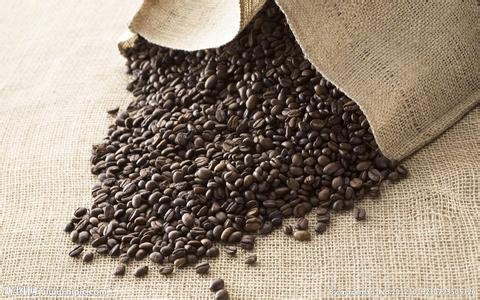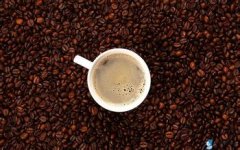The roasting process of coffee is the direct heating of the roast.

Simply put, baking is the direct heating of baked goods. Unlike cooking, baking does not require oil, water, salt or sugar. Just put the green coffee beans in a heat-resistant container and heat them over a fire. While heating, stir the coffee beans so that each bean is evenly heated. When we reach the desired level, stop heating. The whole process is actually a bit like barbecue, except that the roasted things are coffee beans.
The process of coffee from green beans to ripe beans is quite dramatic. Without roasting, coffee would not have the familiar aroma, complex taste buds, and certainly not as popular as it is now! Coffee beans smell green before they are roasted, and some dried beans even smell fermented! The process of roasting raw beans into ripe beans is called caramelization. In the caramelization process, the sugars, fats, proteins and amino acids in coffee beans... And so on and so forth began to interact and combine, and the result was to go from more than 200 substances in the beginning to more than 800 substances in the end, such as the familiar coffee aroma, which is the melanin-like taste produced after caramelization.
The first explosion: coffee beans generally contain about 10% moisture, when roasting begins, this moisture will be the first thing to run out of the coffee beans, so the initial stage is dehydration. As the temperature gradually rises, the gas and water inside the coffee bean will start to give pressure to the cell wall because it wants to escape. When the pressure accumulates to 20~25 atmospheres, the cell wall will break through. This is when you will hear the explosion sound. We call this stage the 'first explosion'. The temperature at this time is about 190~200 degrees Celsius. Because each baking is in batches, some beans will burst earlier to facilitate cracking; some will be later, so the sound must be sporadic at first, then gradually dense, and finally gradually sparse and even end (it is recommended to record the start and end time). At this time, the color of the coffee beans is not the initial khaki color, but a slightly lighter coffee color, the general coffee beans will be roasted at least to this extent before the pot, we call this degree of roasting 'light roast'.
The second explosion: the temperature at the end of the first explosion will be about 205 degrees, and then as the heating continues, the temperature continues to rise, the color of the coffee beans will gradually become darker, and when the temperature reaches 230 degrees, the coffee beans will also emit a cracking sound, which is the second explosion. The sound of the second explosion is small and high frequency, which is not the same as the first explosion. At the same time, the film on the surface of the coffee beans will fall off. The color of the coffee beans entering the second explosion will be darker, and the surface will begin to appear oily.
Deep Roast: After the second explosion, it will enter the deep roast level. At this time, the coffee beans will become oily black and will emit a lot of smoke. If the house is equipped with smoke detectors, it is best to turn off the alarm first, so as not to make the whole building know that you are roasting coffee! At this point, the temperature usually does not exceed 240 degrees Celsius. If you want to do further deep roasting, you have to raise the temperature to more than 240 degrees Celsius. At this time, the surface of the coffee beans will become almost black and appear very greasy. This is probably the limit of the roasting depth of coffee beans. In the roasting, it is guaranteed that the coffee beans will burn up and become authentic freshly roasted coffee beans.
Important Notice :
前街咖啡 FrontStreet Coffee has moved to new addredd:
FrontStreet Coffee Address: 315,Donghua East Road,GuangZhou
Tel:020 38364473
- Prev

Introduction to Coffee Baking General knowledge of roasting of coffee beans
Without the taste of baking, it is impossible to appear in the cup; as for cooking, it is a means to avoid the disadvantages of baking. This is a view that all coffee experts will agree with, but what happened to the coffee beans during the baking process? What does the so-called first explosion and the second explosion mean? Now let's learn about baking from the beginning. Why did you do it yourself?
- Next

The common sense of roasting coffee beans the time for coffee to stop baking
When do you want to stop baking? It can be judged from the following points: 1. Coffee bean color: because coffee beans show different colors when roasted to different degrees, color becomes the most commonly used basis for baking depth. This method can be applied to most coffee beans, but some coffee beans are special. For example, the color of Kenya beans is much darker than ordinary coffee beans.
Related
- Beginners will see the "Coffee pull flower" guide!
- What is the difference between ice blog purified milk and ordinary milk coffee?
- Why is the Philippines the largest producer of crops in Liberia?
- For coffee extraction, should the fine powder be retained?
- How does extracted espresso fill pressed powder? How much strength does it take to press the powder?
- How to make jasmine cold extract coffee? Is the jasmine + latte good?
- Will this little toy really make the coffee taste better? How does Lily Drip affect coffee extraction?
- Will the action of slapping the filter cup also affect coffee extraction?
- What's the difference between powder-to-water ratio and powder-to-liquid ratio?
- What is the Ethiopian local species? What does it have to do with Heirloom native species?

